The bags under your eyes are badges of honor for surviving another sleepless night, but we’re here to help you solve the problem of a baby awake in a crib but not crying.
Being a parent is a fulfilling journey but a sleepless one, too.
By now, you have indeed gotten used to staying up late to some degree.
Parents plan and compromise, but you don’t have to be soldiering through it every night. There are proactive steps that you can take to ensure a good night’s rest for everyone.
We aim to change your mentality from ‘this too shall pass’ to ‘let’s do something about it’.
First things first, it’s essential to understand why you have a baby awake in a crib but not crying. Knowing the real cause of your baby’s sleeplessness is the first step to fixing it.
By understanding the stages of baby sleep and possible reasons for being awake in a crib, parents can take smart and informed steps to ensure healthy sleep habits for their baby.
What Exactly Is Going On?
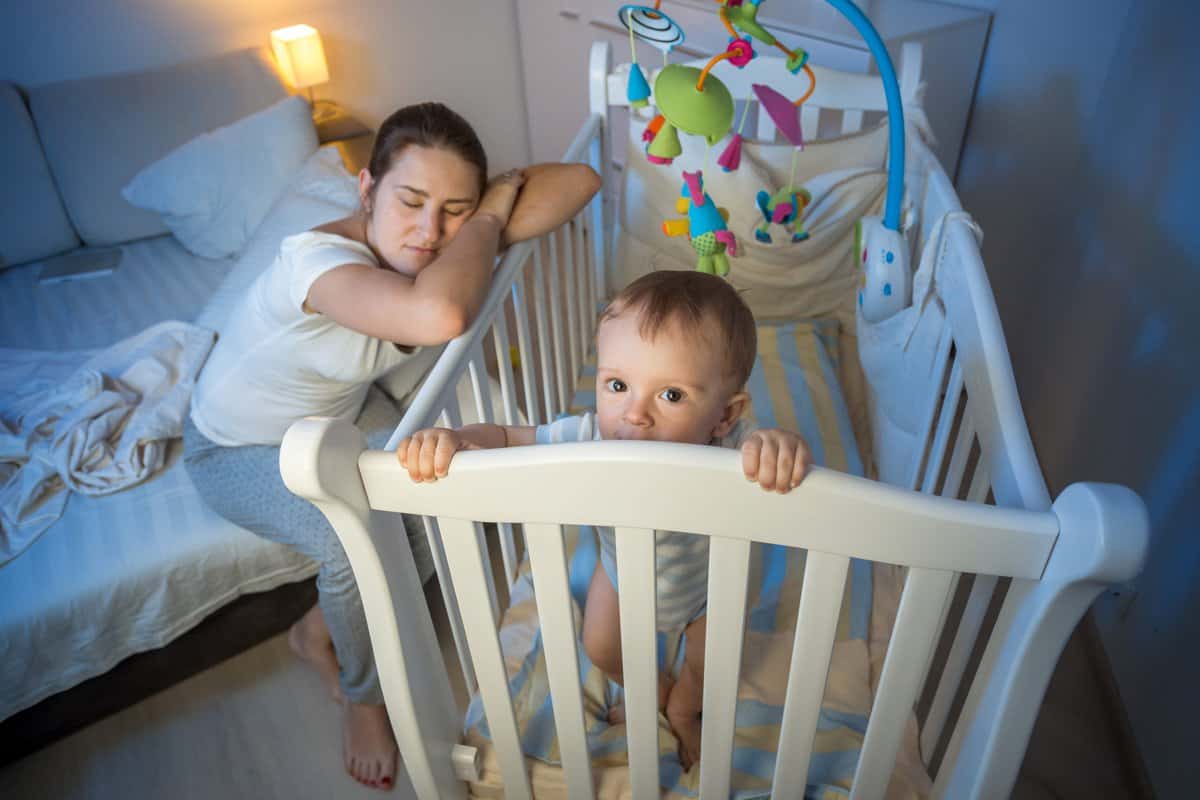
Babies sleep all the time, right?
Well, yes, except when you want them to.
Sometimes, it even feels like they’re doing it on purpose.
Rest assured, there’s always a good reason. A baby awake in a crib but not crying can be a difficult situation for parents to assess what exactly is going on.
How do you respond? Is there anything wrong with your baby?
Let’s answer these questions and more by examining the most common causes.
1 • Baby could be hungry or thirsty.
Hunger and thirst are maybe the most frequent reasons.
There’s a common misconception about hungry babies. Parents often think that a crying baby is simply asking for food, but a crying baby is not just hungry, but very, very hungry.
Crying is your baby’s last resort. There are many earlier signs of hunger.
So, a baby awake in a crib but not crying can indicate that they want to eat.
Consider your feeding times. A newborn has a tiny stomach, and they need to be fed frequently, every two to three hours. You need to set up a good feeding schedule.
If you’re breastfeeding, keep your baby nearby so you can respond in a timely manner.
Even though hunger and thirst are common reasons behind a baby awake in a crib but not crying – your baby could still refuse to eat or drink, which suggests a different cause.
2 • Baby could be hot, cold or uncomfortable.
Even the smallest changes to your baby’s environment can disrupt their sleep.
Consider the baby’s room temperature.
Babies are sensitive to temperature changes. As opposed to adults, they get hot or cold more easily. Therefore, parents have to ensure a stable temperature in the baby’s room.
Ideally, the temperature should range from 68-72°F (20-22°C).
Make sure to dress your child appropriately, too.
However, a baby awake in a crib but not crying could also be a result of noise and light.
Noise can startle babies from sleep, especially if they’re loud and unexpected. Therefore, parents have to lower the amount of noise in the house when it’s time for them to sleep.
Some parents even use white noise machines to improve their baby’s sleep.
Other than that, light is also a common reason why babies wake up during sleep time. You need to ensure that your little one sleeps in a dark environment. Use blackout curtains.
It’s also important to consider the baby’s overall comfort.
Is the crib safe and comfortable for them?
What about the mattress?
Doublecheck that your baby is comfortable sleeping in their crib. Maybe look into crib alternatives, too.
3 • Baby could be teething.
Most babies start teething at around 6 months, but it can happen sooner and later, too.
This important milestone can also be a reason of a baby awake in a crib but not crying. As their teeth begin to gradually emerge through the gums, it causes pain and discomfort.
This leads to drooling, chewing, irritability and, of course, disturbed sleep.
Some teething babies outright refuse to sleep unless held.
They may wake up more frequently during the night as a result of the discomfort.
Sometimes, the discomfort is lesser in intensity, so they won’t end up crying.
If you have a reason to believe that teething is the cause of your baby’s sleeplessness, there are more ways than one for parents to help their babies feel more comfortable.
Some of the most common solutions include teething toys, massages, cold objects and pain relief medication. If teething happens to cause extreme pain, seek medical guidance.
4 • Baby could be experiencing separation anxiety.
Most babies go through the separation anxiety stage.
It starts between 6 and 8 months and typically ends by the time a child is 3 years old.
However, these timelines vary on a case-to-case basis.
Even though separation anxiety is a normal, natural part of emotional development, it can be one of the main causes of having a baby awake in a crib but not crying for attention.
There are some pretty telltale signs that point to separation anxiety.
These include clinginess, fearfulness, night wakings and difficulty falling asleep.
When they realize that their caregivers aren’t present, they find it harder to fall asleep. Sometimes babies cry to communicate that they’re upset, but it doesn’t always happen.
So, what are your options?
Babies thrive on consistency. So, you need to establish a consistent sleep schedule.
Start incorporating activities that promote self-dependence and individuality. Reassure your baby when necessary, but work towards self-dependence gradually and patiently.
Some parents find success by providing comfort objects, such as toys.
Separation anxiety can be a real headache for parents, but it’s part of the process. If the issue persists or escalates in a serious way, don’t hesitate to seek help from a pediatrician.
5 • Baby could be going through sleep regression.
If your baby is getting up in the middle of the night or waking up early, it could be due to sleep regression, a common problem that impacts baby sleep by disrupting sleep patterns.
Bear in mind that sleep regression is normal and, more importantly, temporary.
However, it can occur multiple times during the first two years.
The most obvious signs of sleep regression include a difficulty staying asleep or taking a nap, even if they’re tired, as well as a baby waking up for no clear reason during the night.
As a result, babies tend to take shorter naps or avoid napping altogether.
Due to a lack of sleep, a baby is more fussy and more vulnerable to waking up in the middle of the night, staying completely awake despite your best efforts to soothe them.
To battle sleep regression, you need adequate sleep training and consistency.
Sleep training consists of sticking to a regular sleeping schedule, despite the difficulties you face. Hold and rock your baby when necessary. Do what you can to help calm them.
Make sure to practice good sleep habits, too. As such, avoid including any stimulating activities in their bedtime routine. Replace them with soothing activities, like a bath.
Above all else, stay patient, disciplined and remember that it’s only a phase.
Making Sense of Your Baby’s Sleep Patterns
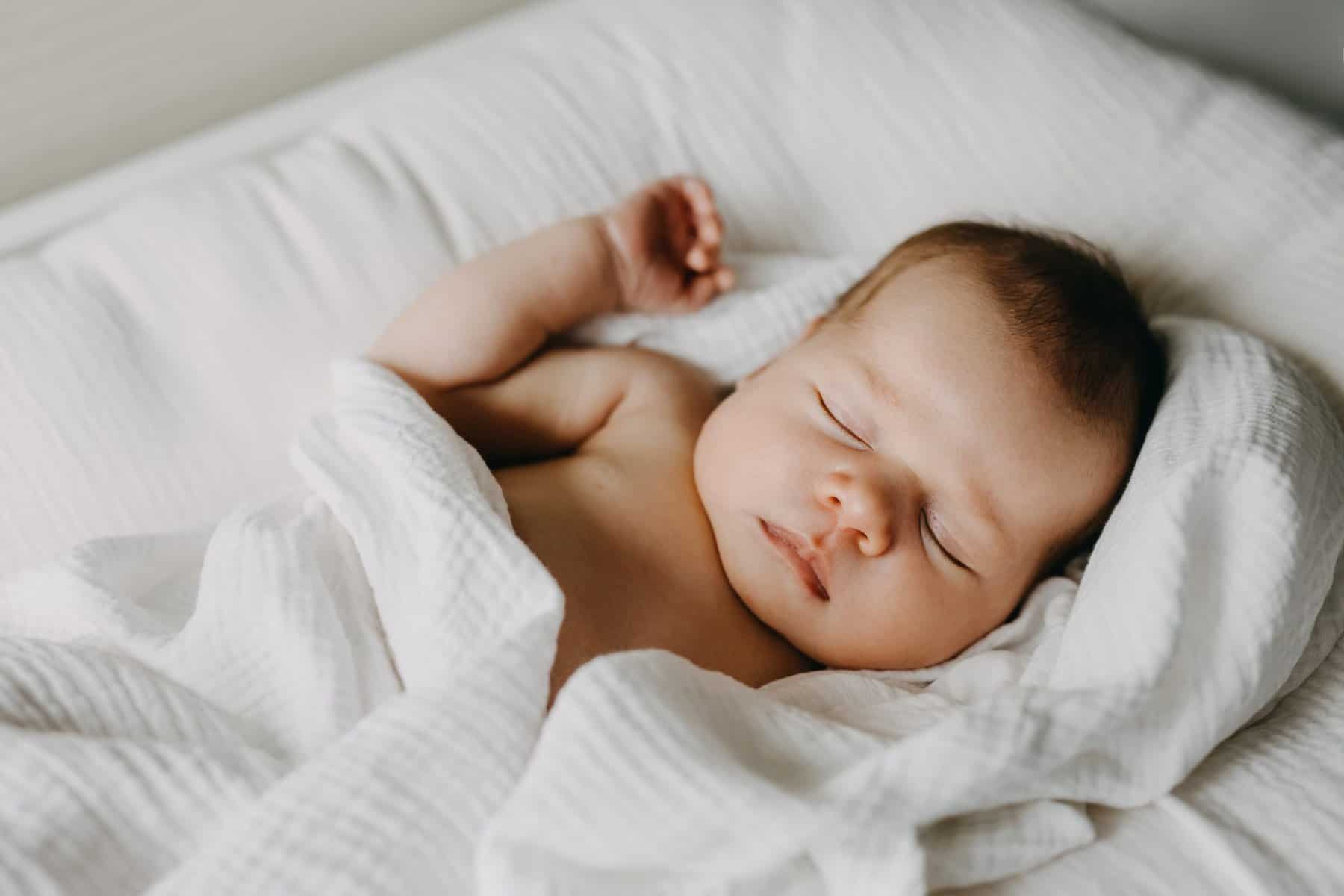
Before we can discuss strategy, we have to analyze baby sleep rhythms.
By understanding the different stages of a baby’s sleep, it gets easier to pinpoint the exact cause and, as a direct result, plan an effective solution to your baby’s late night wakings.
Let’s go over the different stages of your baby’s sleeping pattern:
1 • Just like adults, the first sign is always drowsiness.
During this stage, babies are less responsive, less alert and look tired and sleepy.
This stage implies that your precious little angel is ready to hit the sack. As such, it’s the ideal time for bedtime activities, such as a bath or story time, to help soothe your baby.
It’s important for parents to incorporate soothing activities because drowsiness doesn’t guarantee sleep. Stimulate your baby during this stage, and they’re suddenly wide awake.
A baby playing with toys before bed is going to have a more difficult time falling asleep.
So, you want to make sure that you create a sleep-friendly environment when you start noticing your little one becoming drowsy. This includes, for example, dimming the lights.
A calm and quiet sleeping environment promotes healthy sleep patterns.
2 • Light sleep is the second stage of a baby’s sleep pattern.
Light sleep is a short stage that lasts up to 10 minutes. During this period, a baby is easily startled from sleep. Any kind of loud noises and sudden movements can awaken them.
This is where the sleeping environment you created matters most.
From keeping the baby’s room dark and making sure that there’s no external stimuli to disrupt your baby’s sleep – these things are important in ensuring a good night’s rest.
However, even if you have the best sleep strategy, babies still tend to wake up for no apparent reason. Sometimes, it’s normal to have a baby awake in a crib but not crying.
Most of the time, they fall back asleep on their own. If not, you need to intervene.
Monitor your baby’s sleeping patterns closely in order to discern any discomfort.
3 • After light sleep, babies enter deep sleep.
This 50 to 60 minute cycle is when a baby gets the most rest.
During this stage, their body is relaxed, their breathing slow and their brain recharges.
The process is very similar to that of adults, and the time difference is slight.
Even though babies are in a deeper state of sleeping, it’s still possible for their sleep to be disrupted. Therefore, parents have to make sure to create a safe and calm environment.
Preserving their sleeping rhythms throughout all the stages is key.
How long a baby spends submerged in this restorative state varies on a case-to-case basis. Even so, their sleep patterns and rhythms change and evolve with every passing month.
If you’re having doubts, consult a pediatrician for professional guidance.
4 • REM – the final stage of a baby’s sleep cycle.
During the REM (Rapid Eye Movement) phase, the brain is very active.
This is when dreams occur. It’s a stage that’s important for both adults and babies, because it facilitates crucial processes, such as memory consolidation and learning.
Babies spend a lot of time in the REM phase, but it gradually decreases with age.
Interruptions to the REM phase are particularly undesirable. When a baby wakes up in the middle of a delicate REM phase, going back to sleep presents a challenge in and of itself.
Babies tend to twitch and make small movements during this stage.
If you have created a sleep-conducive environment for your child, you’re making sure not only that the REM phase lasts for as long as it should, but that your baby sleeps well, too.
Understanding these stages is important, because it allows parents to support their baby’s sleeping rhythms so that they can get the quality sleep they need for optimal growth.
Helping Your Baby Sleep Better
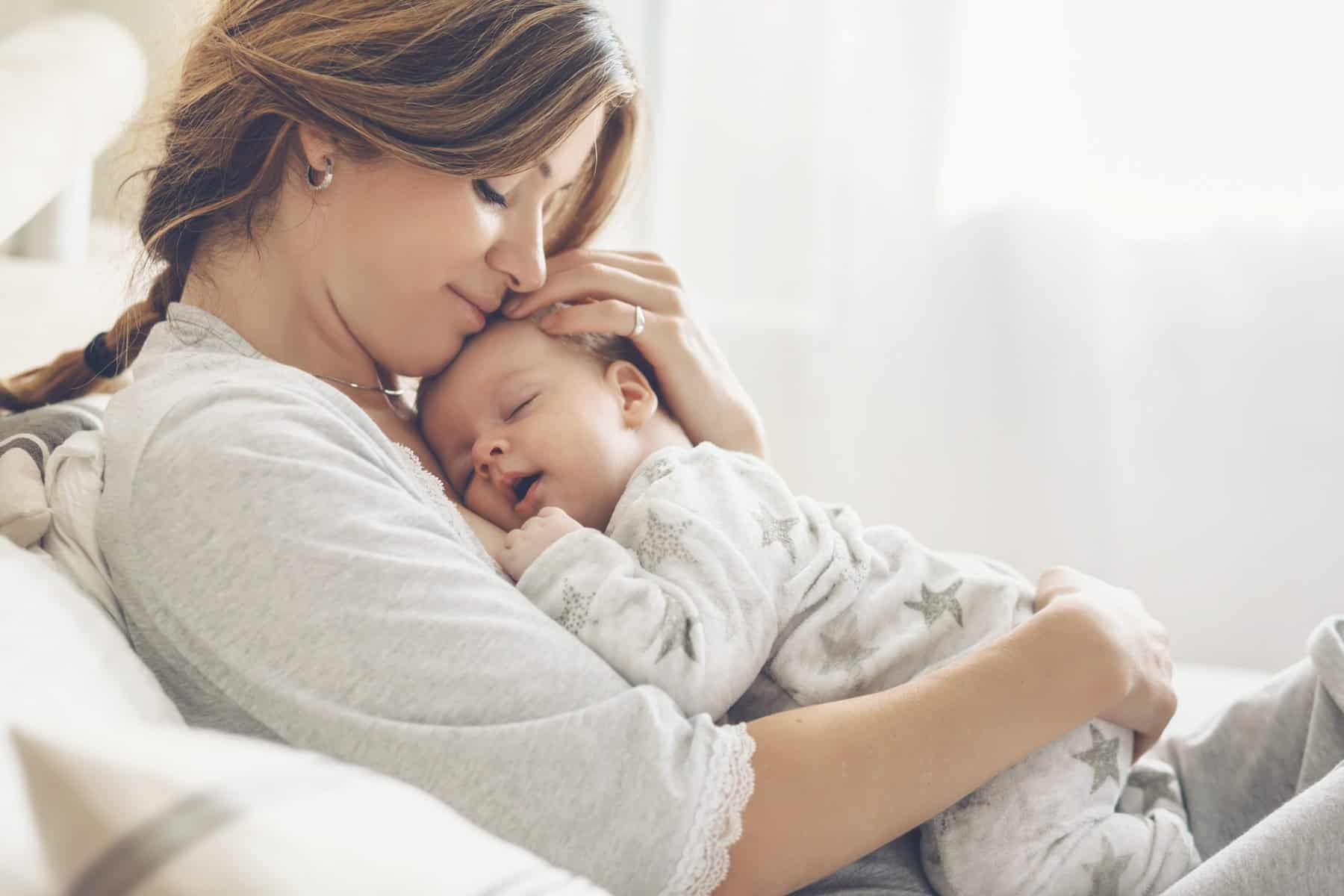
All right – so, what can you do to solve it?
Having a baby awake in a crib but not crying is a difficult dilemma for parents due to the fact that it isn’t easy to figure out what’s going on. Deciphering it takes keen observation.
However, the right strategies and techniques are sure to have a positive effect on your baby’s sleep, even if you don’t know the actual cause, because these habits are healthy.
Sleep training is a must if you want to prevent your baby from waking up unexpectedly.
Let’s explore a few strategies that promote and encourage optimal baby sleep.
• Establish a consistent sleep schedule.
Being consistent is baby sleep 101.
Every baby has an internal clock by which they predict upcoming events and form habits.
Predictability, therefore, is the bread and butter of managing baby sleep.
First, you have to set a regular bedtime schedule.
Your baby’s sleep schedule should work well with yours. Make sure to stick to it as much as possible, because consistency signals to your baby when it’s time for them to sleep.
You also want to organize a calming bedtime routine.
A baby playing throughout the day is fine, but bedtime routine is all about relaxation. As such, include activities that soothe your baby, such as a warm bath or a relaxing massage.
Avoid stimulating activities, because they make it harder for your baby to fall asleep.
However, if you decide to prepare your baby for sleep by bathing them first, make sure to do it often so that they can put two and two together and learn to anticipate bedtime.
You don’t have to overdo it. A short and sweet routine ought to work well enough.
Be willing to experiment until you figure out what relaxes and soothes your baby.
Even if you set up the perfect bedtime routine and do it consistently, it doesn’t guarantee that it will work every time. Babies are unpredictable and sometimes outright infuriating.
Be flexible when you have to, willing to adjust your baby’s routine on the go.
• Create a sleep-conducive environment.
You have a schedule set up. What’s next?
Now, you have to create a sleep-conducive environment.
What does that imply? It encompasses a number of things, all of which work together to enhance sleep. A baby needs to feel safe, secure and calm when it’s time to hit the sack.
Consider the lighting in the room. Babies don’t have a fear of the dark, so feel free to keep the room dark while your baby sleeps, because it helps them fall and stay asleep.
You can use blackout curtains if you need to block out any outside light.
Besides light, noise is a known disruptor of sleep.
Minimize the amount of noise in your house when it’s time for bed. This includes a variety of things, such as turning off the TV. Eliminate any kind of disruptive background noise.
Some babies respond well to white noise. If you have a baby awake in a crib but not crying, consider using it. It’s proven to help babies fall asleep in just under 40 seconds.
With the light and sound sorted, focus on keeping the room at an optimal temperature.
For babies, a room temperature between 68-72°F (20-22°C) works best. Don’t forget to take your baby’s clothing into account, too. Dress them appropriately for the weather.
Dressing them snuggly and comfortably promotes healthy sleep.
Make sure to examine the baby crib, as well. Is it in working condition? Is the mattress firm enough? Does it fit into the crib nicely? Get rid of any pillows, if you have them.
A baby crib should only have a firm mattress. Anything else is a suffocation risk.
• No TV before bed.
It’s a parenty thing to say, but with good reason.
The point is to avoid any kind of overstimulation before sleep or even a nap.
Such activities make it significantly harder for a baby to fall asleep. Many parents make the common error of thinking that exhausting their baby will help them fall asleep easier.
On the contrary, overtiredness leads to sleep difficulties.
It can even mess up your baby’s wake time.
Therefore, put your baby down for a nap or bedtime as soon as the first signs appear.
If you’re keeping your baby’s sleeping schedule consistent, you’ve probably already introduced sleep-enhancing bedtime activities, such as reading books or massages.
A baby playing before bedtime should only engage in calm activities.
• Learn to read your baby’s cues.
Being adaptive, responsive and flexible as a parent means everything.
Sometimes, your baby will show you that they want to sleep before schedule. Going to bed early is something that you ideally want to avoid, naturally, but sometimes it’s necessary.
If your baby’s tired – don’t wait. Set them down for a nap or for bedtime.
The last thing you want is to have an overtired baby.
Therefore, recognizing signs of sleepiness is an important aspect of sleep training.
The most obvious signs include yawning, rubbing their eyes and irritable behavior. On the more subtle note, a baby is less interested for activity and tends to stare off into space.
Basically, they become less responsive to you and their surroundings.
Even clinginess may point to the fact that your baby needs to sleep. As such, an overtired baby may find it harder to sleep in a crib, so you want to prevent that from happening.
Do so by learning your baby’s cues and responding in a timely manner.
• Keep your baby safe.
Day or night, every baby needs to feel safe and comfortable.
By practicing safe sleep, you directly create a healthy sleeping environment.
The first thing to keep in mind is the risk of Sudden Infant Death Syndrome (SIDS). In order to minimize the risk of SIDS effectively, always place your baby on their back.
You also want to use a firm mattress, whether it’s bedtime or just a nap.
A baby in a crib should have no access to soft objects like toys or pillows. It’s important to know that these items are associated with an increased risk of suffocation in newborns.
Even though you may like the idea, avoid co-sleeping in the same bed.
Generally, co-sleeping is only considered safe for a 12 month old baby or older. But, even then, we still advise prioritizing individual sleep due to the many dangers of co-sleeping.
If you’re insistent, consider using a bedside bassinet or a co-sleeper attached to your bed.
Newborns react to stress. A baby awake in a crib but not crying could be picking up on your negative energies if you’re constantly worried. So, give yourself peace of mind.
Do so by making sure that your baby is always safe, secure and comfy.
• Take care of yourself.
Every parent is a superhero, but being tired isn’t going to help your cause.
Looking for motivation? Here’s a few inspiring quotes to keep you going.
Having a baby awake in a crib but not crying is a difficult puzzle to solve, but not an impossible one. Parenting a child is rewarding, but often stressful and frustrating, too.
You have to know how to take care of yourself.
Taking better care of yourself allows you to be a better parent.
Remember that every baby is different. Some parents have to deal with a baby that likes to wake up early. Some parents face the trouble of getting their baby to fall asleep at all.
Know that you need to prioritize your own well-being, as well.
You need patience and energy to tackle these problems on a day to day basis.
Make sure that you’re getting enough rest. Eat well and don’t feel bad about taking breaks.
Talk with your partner and find a solution that works best for the both of you.
Sleep training is important, but so is self-care.
You likely won’t get the results you want on day one. Be realistic with your expectations. No strategy is an end-all and be-all solution. Instead, it takes persistence and effort.
Starting early is a good step in the right direction.
Remember to stay calm under pressure. Having a baby awake in a crib but not crying or experiencing any kind of similar problem is draining, but you need to remain positive.
Maybe it sounds impossible right now, but all it takes is a decision.
Know that you’re not alone and don’t hesitate to ask for help if you need it.
In Conclusion

So, there’s a lot to consider.
There are many possible reasons that may cause a baby to get up unexpectedly in the middle of the night. With how often it happens, it would be strange if it suddenly stopped.
Understanding the different causes makes it easier to pick an ideal strategy.
Whether it’s hunger, teething or just the matter of a baby playing in the crib, exploring their surroundings and having a good time – these strategies will help you regardless.
Our selection of tips and tricks aim to help you learn how to improve your baby’s sleep.
From consistency to recognizing signs of sleepiness and making sure to avoid any kind of overstimulation, such as a baby playing before bedtime, you develop healthy habits.
By practicing these habits and routines, you improve not only your baby’s ability to fall asleep, but you also lessen their tendency to wake up early or in the middle of the night.
The right strategies matter – but it’s your patience that makes or breaks the process.
Sleeplessness is rough, but you will probably end up missing nights like these.
Focus on being patient, positive-minded and consistent. Apply these strategies not only because you’re facing a dilemma, but because they help your baby get the rest they need.
Don’t forget to cherish these little surreal moments when you’re up and about in the middle of the night, making a cup of coffee and working magic to get your baby to sleep.
As worded beautifully by Gretchen Rubin:
The days are long, but the years are short.
Appreciate every single moment while it lasts. Even the hardships.

Mother of three and a primary school teacher. I’ve always loved being around children and helping them, so I chose my path as a teacher. It is sometimes hectic with three children, but I am 100 percent into it and wouldn’t change it for anything in the world.

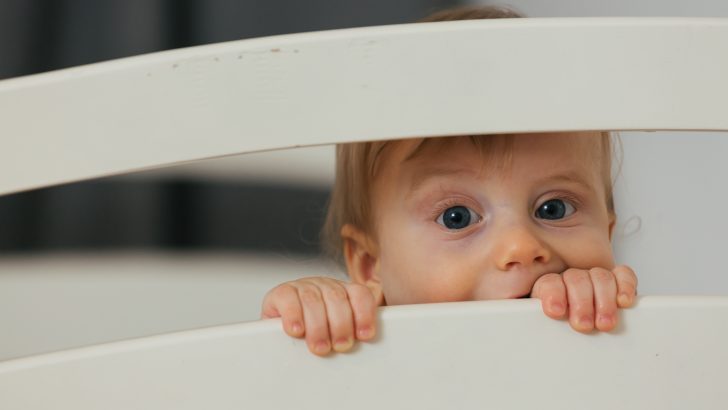
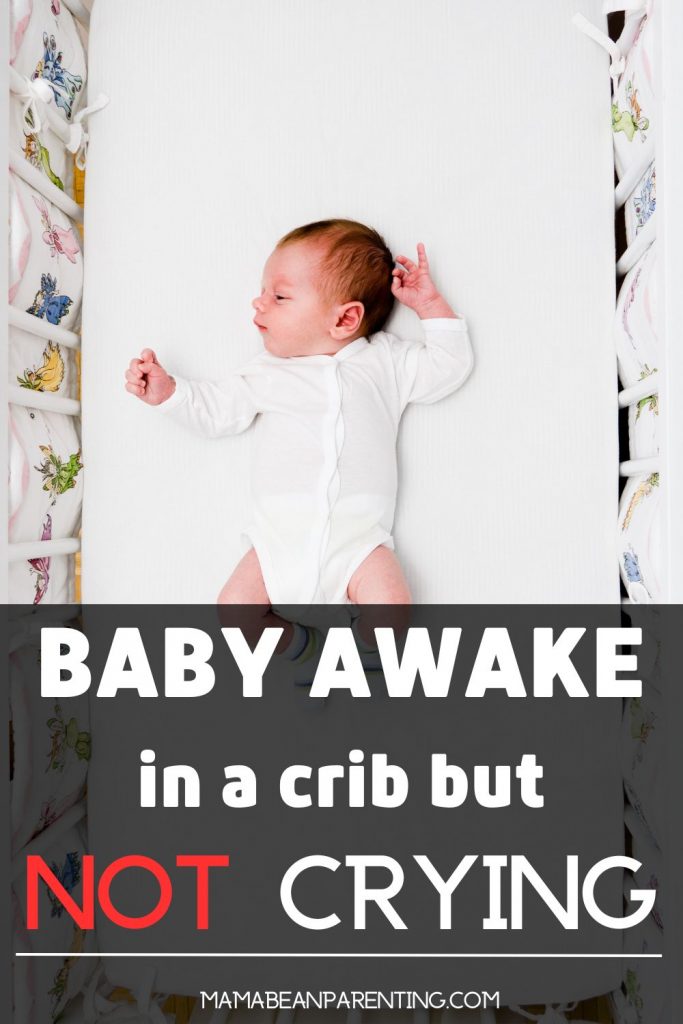
Mini Crib vs Crib: Making the Right Choice • Mama Bean Parenting
Wednesday 15th of March 2023
[…] Sometimes, your baby may even be awake in a crib but not crying. […]